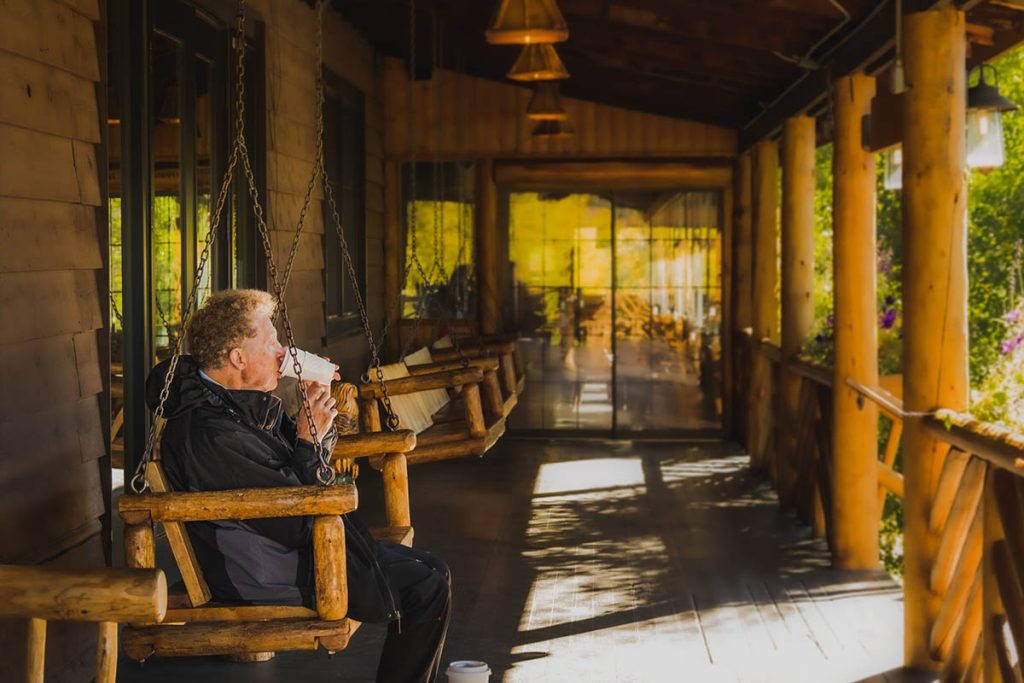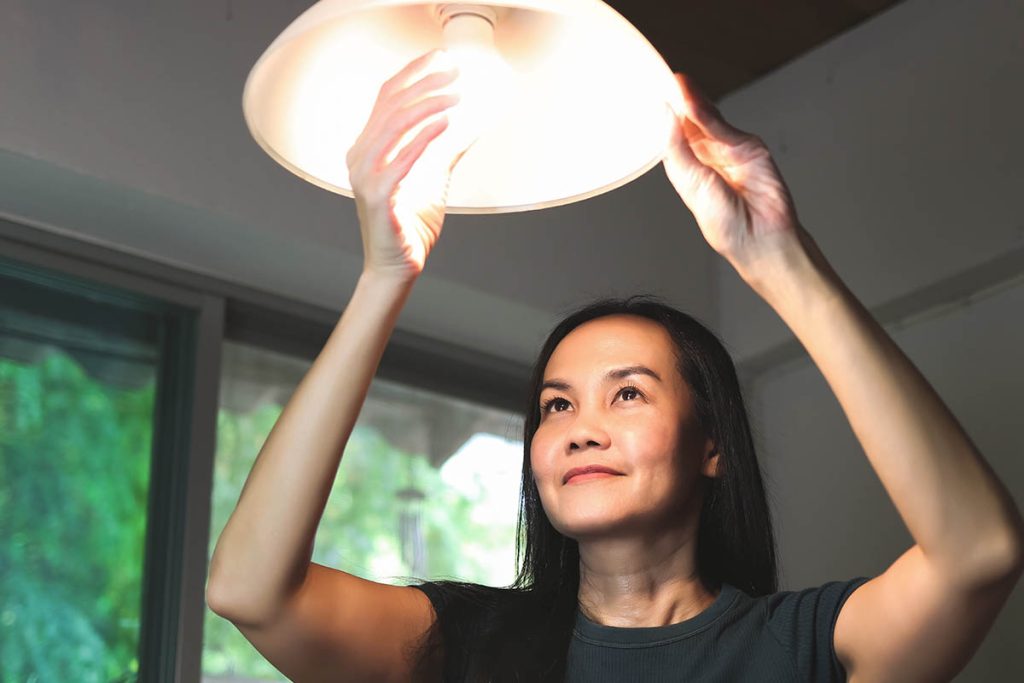
Have you ever noticed that a bright, sunny day, even in the midst of winter, can make you feel a bit more cheerful and sunny on the inside?
Intrigued by this phenomenon, a team of researchers decided to explore the impact of sunlight exposure on mood. The study involved a substantial group of 502,000 adults, aged between 37 and 73, with a slightly higher participation of women at 54%. The focus was on the link between the time these individuals spent outdoors in natural light and their reported mood states.
The participants were soaking up, on average, about 2.5 hours of daylight each day. Interestingly, the data revealed that every additional hour spent outside in the daylight correlated with various mental health benefits.
Increased Sunlight Exposure Benefits:

• Significantly lower chances of developing major depression over their lifetime
• Reduced reliance on antidepressants
• Less frequent experiences of low mood or indifference
• Increased feelings of happiness and emotional stability (1)
What’s truly remarkable about these findings is that these benefits remained consistent regardless of the participants’ demographic, lifestyle, or employment circumstances.
Why Light Matters for Your Mental Health

Light, specifically sunlight, plays an integral role in your mental health. It’s not just about illuminating your surroundings. It’s also about the profound biological effects it has on our bodies and minds. Sunlight interacts with your brain and body in ways that can significantly influence your moods, energy levels, sleep patterns, and overall psychological well-being.
As we delve into the five key points below, you’ll discover why light, or lack thereof, can dramatically impact our mental health.
1. Regulation of Circadian Rhythms

Light is pivotal in regulating our circadian rhythms, the internal clock that dictates our sleep-wake cycle. Exposure to sunlight, especially in the morning, helps synchronize this rhythm, promoting better sleep and overall mood.
In the winter, when daylight hours are limited, individuals may experience disruptions in their circadian rhythms, leading to symptoms of seasonal affective disorder (SAD) and general feelings of lethargy. (2)
2. Boosting Mood and Easing Depression

Sunlight stimulates your brain’s production of serotonin, a neurotransmitter associated with mood regulation.
Lower levels of sunlight exposure, common in winter, may contribute to reduced serotonin levels, potentially leading to symptoms of depression. Introducing more light into the environment can help ease these symptoms and enhance overall mood. (3)
3. Vitamin D Synthesis

Sunlight is needed for the body to synthesize vitamin D, which supports bone health and has been linked to mental well-being.
In the winter, when outdoor activities may be limited, getting enough sunlight becomes crucial for maintaining adequate vitamin D levels. A deficiency in this vitamin has been associated with an increased risk of mood disorders. (4)
4. Improving Focus and Productivity

Exposure to bright light has enhanced cognitive function, focus, and productivity. Natural light, in particular, positively impacts alertness and concentration. In the winter, when you may experience a dip in energy and motivation, optimizing light exposure can help mitigate these effects.
5. Mitigating Seasonal Affective Disorder (SAD):

Seasonal Affective Disorder is a type of depression that happens most often in the winter months. It is strongly linked to reduced exposure to natural light.
Light therapy, which involves exposure to a bright light that mimics natural sunlight, is a common and effective treatment for SAD. Ensuring adequate light exposure through various means can be a preventative measure for those susceptible to this condition.
Tips for Getting the Light You Need

1. Morning Sunlight Rituals

Start your day with a morning sunlight ritual. Spend time outdoors, preferably within the first hour of waking, to absorb natural light. Your daily sunlight ritual can be as simple as taking a brisk walk, enjoying coffee on the porch, or doing a morning workout in the garden.
2. Use Light Therapy Lamps

Light therapy lamps, designed to mimic natural sunlight, can be a valuable add-on to your winter routine. Position the lamp at eye level and spend 20-30 minutes in front of it each morning. This light therapy method can help regulate your circadian rhythms, boost mood, and alleviate symptoms of SAD.
3. Maximize Natural Light Indoors

Arrange your living and working spaces to maximize exposure to natural light. Keep curtains open during the day, choose light-colored decor to reflect light, and position furniture near windows. Enhancing your space to maximize sunlight ensures you benefit from as much natural light as possible indoors.
4. Invest in Full-Spectrum Bulbs

Replace traditional light bulbs with full-spectrum bulbs, which closely mimic the spectrum of natural sunlight. These bulbs can be particularly beneficial in areas with limited sunlight, such as basements or rooms with few windows.
5. Create Bright Spaces

Opt for bright, well-lit environments in your home and workspace. Arrange furniture to capitalize on available light, and consider adding mirrors to reflect and amplify natural light. Bright spaces contribute to a positive and energetic atmosphere.
6. Outdoor Activities in Daylight

Whenever possible, engage in outdoor activities during daylight hours. Whether exercising, reading, or simply enjoying a cup of tea, spending time outdoors exposes you to natural light and provides various mental health benefits.
Understanding the profound impact of light on mental health, particularly in winter, empowers you to take proactive steps to enhance your overall well-being. Try weaving these tips into your daily routine to harness the therapeutic power of light to combat the winter blues, improve mood, and cultivate a healthier mindset. Light, as a natural and accessible resource, becomes a crucial ally in pursuing mental wellness throughout the seasons.
Lighten Your Day with Mushrooms

Stonehenge Health Dynamic Mushrooms brings together the powerful combination of Lion’s Mane and Reishi with Chaga, Maitake, and Shiitake. These mushrooms are adaptogens, a category of herbs and fungi known for their ability to support wellness*
Adaptogens, such as those found in Dynamic Mushrooms, work by helping the body adapt to various stressors.* In particular, Lion’s Mane and Reishi are known for their cognitive benefits, while Chaga, Maitake, and Shiitake contribute to overall well-being.*
By conveniently combining these adaptogenic mushrooms, Stonehenge Health allows you to effortlessly incorporate their wide-ranging benefits into your daily routine without the need to source individual ingredients.*
Immerse yourself in the advantages of adaptogens and achieve a more centered state of being with Stonehenge Health Dynamic Mushrooms.*
* These statements have not been evaluated by the Food and Drug Administration. This product is not intended to diagnose, treat, cure or prevent any disease.
Sources:
1. Journal of Affective Disorders, Vol 261, 15 Feb 2020, Pages 91-98 2. Walker WH 2nd, Walton JC, DeVries AC, Nelson RJ. Transl Psychiatry. 2020 Jan 23;10(1):28. 3. Oaklander M. “The Sun and Your Mood: Why Sunlight Is So Good For You.” Time. 2017. 4. Eyles, D. W., et all (2013). Frontiers in Neuroendocrinology, 34(1), 47–64. 5. Being in natural light improves mood, increases happiness UCLA Health. uclahealth.org/news/being-in-natural-light-improves-mood-increases-happiness















